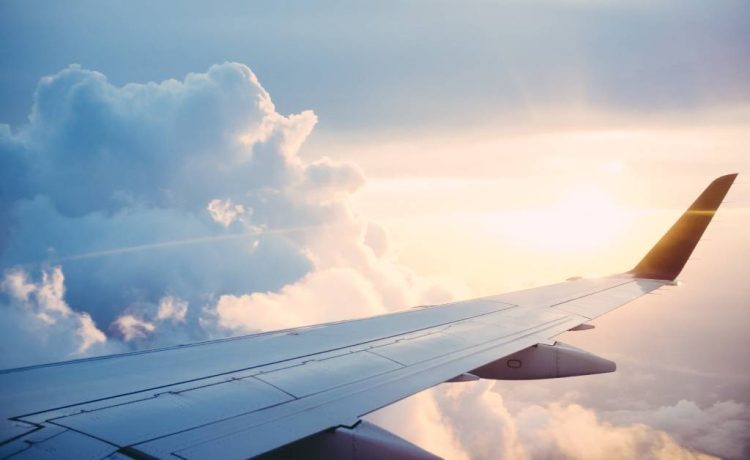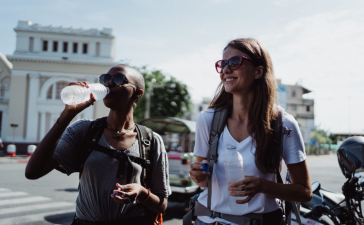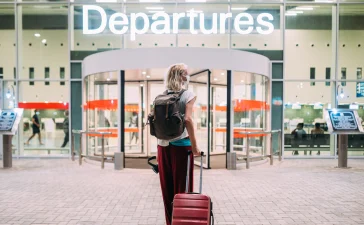Whether you’re hopping between time zones, enduring long flights, or trekking through new terrain, maintaining your energy and supporting your body’s recovery is essential for making the most of every moment. From smart luggage choices that promote circulation to simple sleep hacks and modern recovery methods, this guide will help you stay revitalized from takeoff to touchdown. Read on for five practical strategies that will keep you feeling fresh, focused, and ready to explore—no matter where your travels take you.
Smart Packing for Improved Circulation and Comfort
Packing strategically can make a profound difference in how your body feels during travel, especially when optimizing circulation and comfort. Start by selecting compression socks or stockings designed to gently hug your calves, preventing fluid buildup and discomfort during long flights or road trips. Opt for supportive footwear with cushioned soles, arch support, and breathable materials to reduce strain on your feet and lower legs.
Use packing cubes or compression bags to organize belongings and maintain even weight distribution in your luggage—this helps prevent awkward lifting that could constrict circulation. Include a lightweight travel pillow with a design to support neck alignment, reducing tension in shoulders and improving posture. Layer moisture-wicking clothing that regulates temperature and keeps skin dry, avoiding constricting damp fabrics. Place heavier items close to the suitcase’s wheels to maintain balance, making rolling or carrying easier and less taxing on your body. These packing tips will keep you energized and ready to explore from departure to arrival.

Sleep Hacks to Beat Jet Lag and Boost Recovery
Mastering sleep on the road can transform your travel experience by reducing fatigue and accelerating your body’s natural repair mechanisms. Begin by aligning your bedtime with your destination’s time zone several days before departure, shifting by thirty to sixty minutes each night.
During flights or layovers, create a restful micro-environment with an eye mask, noise-cancelling earbuds, and a travel pillow for support. Wear breathable layers to regulate body temperature, and consider aromatherapy to signal relaxation. After landing, expose yourself to bright natural light in the morning to reset your circadian rhythm, while avoiding caffeine and heavy meals within three hours of sleep.
If you’re exploring targeted recovery tools, researching sermorelin ipamorelin blend online may reveal peptides that enhance deep sleep phases and support tissue repair. Finally, power down devices at least forty-five minutes before bedtime and practice breathing or meditation to quiet your mind. These strategies will help you beat jet lag and wake up refreshed, energized, and ready to explore.
Nutrient-Rich Snacks and Optimal Hydration On the Road
Choosing the right snacks and staying hydrated are absolutely essential for sustaining energy and focus on long journeys. Trail mix with unsalted nuts, seeds, and dried fruit offers healthy fats and protein to curb hunger. Whole-grain crackers or rice cakes with almond butter supply complex carbs and plant-based protein for steady energy. Fresh fruit such as apples and oranges delivers sugars, fiber, and hydration to help prevent energy crashes. Drinks like electrolyte-infused water or herbal tea replace lost minerals and support digestion. Greek yogurt with honey adds probiotics, protein, and sweetness to satisfy cravings. Pack snacks in small portions or use individual containers to stay organized and avoid overeating, and carry them in your carry-on.
Aim to sip water throughout the day—refill a reusable bottle or use a hydration pack to hit eight glasses. Combining balanced snacks and smart hydration keeps you energized, refreshed, and ready for any adventure. This simple approach can make long travel days feel truly effortless.
Modern Recovery Techniques for Faster Muscle and Tissue Repair
After an intense travel day or workout, harnessing advanced recovery strategies can significantly shorten downtime and improve tissue repair. Whole-body cryotherapy chambers expose the body to subzero temperatures for a few minutes, reducing inflammation and flushing metabolic waste. Similarly, pneumatic compression boots or garments apply intermittent pressure to limbs, enhancing venous return and nutrient delivery to fatigued muscles.
Red light or near-infrared therapy devices use specific wavelengths to stimulate cellular energy production and collagen synthesis, supporting faster healing of connective tissues. Percussive therapy tools, such as massage guns, deliver targeted vibrations that break up adhesions, improve circulation, and decrease muscle stiffness. Infrared saunas raise tissue temperature to promote relaxation and detoxification without shock of extreme cold. Finally, wearable infrared wraps and localized electrostimulation pads offer on-the-go support by combining heat with gentle muscle contractions to maintain perfusion. Incorporating these techniques into your routine—whether in a hotel, wellness center, or clinic—ensures you stay recovered, energized, and ready for your next adventure.
Conclusion
By integrating smart packing, nutrient-rich snacks, sleep hacks, modern recovery techniques, and staying hydrated, you can maintain peak performance throughout your journey. Whether exploring remote landscapes or bustling cities, these methods support energy levels, accelerate muscle repair, and optimize overall well-being. Implement these practical strategies, and you’ll arrive at each destination revitalized, ready to explore, excited for your next adventure.





